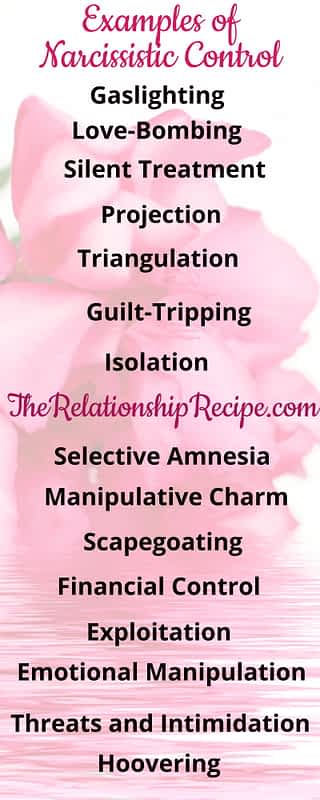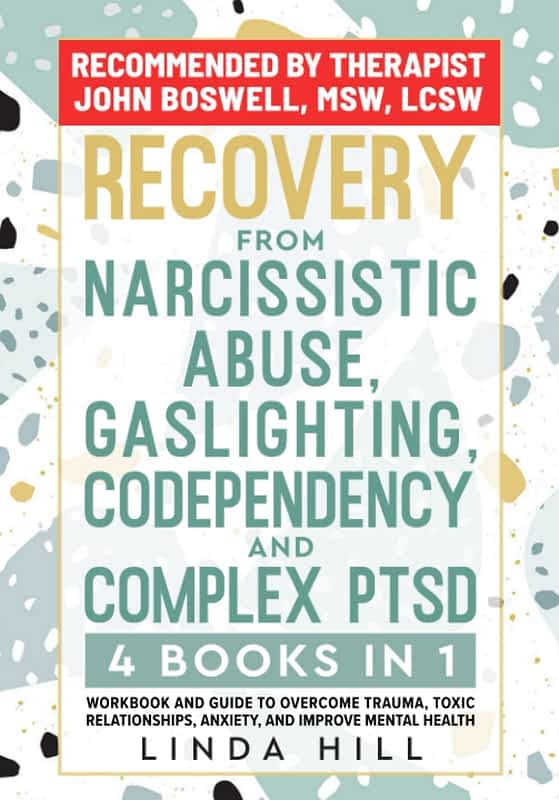Narcissistic Control: 15 Sneaky Tactics – How to Counter Them
Narcissistic control doesn’t always show up with flashing red flags. Sometimes it slips in quietly, wrapped in compliments, promises, and that magnetic charm that pulls you in before you realize what’s really happening. If you’ve ever found yourself second-guessing your gut, feeling like you’re walking on eggshells, or wondering when exactly your relationship stopped feeling safe, you’re not alone.

Narcissistic controlling behavior is sneaky. These folks know how to keep you tangled up: emotionally, mentally, even physically, while still making you feel like you’re the one with the problem. And it’s not your fault. Most of us don’t recognize we’re under someone’s thumb until we’re already deep in it, because let’s face it: narcissists are masters of manipulation.
The thing is, you can see it clearly once you know the signs. And when you see it, you can start taking your power back. Let’s break down these 15 subtle ways narcissists control and what you can do to shut it down, one bold move at a time.
💡Key Highlights
- How to spot the subtle signs of narcissistic control before it takes hold
- The sneaky tactics narcissists use to manipulate and dominate
- Ways to protect your emotional and mental well-being from narcissistic controlling behavior
- Practical steps to set boundaries and regain your independence
- Strategies to rebuild your confidence and break free for good
The Psychological Impact of Narcissistic Control
The psychological impact of narcissistic control runs deep, and it sticks around long after the relationship ends. It messes with your head, your heart, and how you see yourself. When narcissists control someone, they don’t just want influence, they want to reshape your entire sense of self. Over time, their constant gaslighting, manipulation, and sharp-edged “critiques” wear you down until your confidence is barely recognizable. You start to question everything—your worth, your judgment, even your sanity.
Narcissistic controlling behavior also creates this overwhelming sense of powerlessness. You feel stuck, like you’re living in a loop you can’t break. Every time you try to set a boundary or stand up for yourself, they twist it back on you, making you feel guilty, selfish, or crazy. That kind of emotional whiplash doesn’t just stay in the relationship—it can bleed into every area of your life, making it harder to trust your own decisions or speak up for what you need.

Narcissistic control doesn’t just mess with your self-esteem – it can wreck your mental health, too. When someone is constantly twisting your reality, controlling your emotions, and making you feel like everything is your fault, it takes a toll. Anxiety creeps in. Depression sinks its claws deep. In some cases, survivors even walk away with PTSD. The fear, shame, and guilt that come with narcissistic controlling behavior don’t just fade when the relationship ends—they linger and keep you questioning yourself.
And it doesn’t stop there. When narcissists control a relationship, they often work behind the scenes to cut you off from your support system. Suddenly, you’re seeing less of your friends, avoiding family, or second-guessing who you can trust, all because the narcissist has been subtly (or not so subtly) pulling the strings. That kind of isolation doesn’t just leave you lonely; it deepens the helplessness and can make you feel completely disconnected from the world.
The impact of narcissistic control isn’t just emotional; it touches every part of your life. Getting out is possible. Healing is possible. It takes guts, support, and time, but you can find your way back to yourself. You’re not broken, you’ve just been buried under someone else’s chaos. And little by little, you can dig yourself out and start to breathe again.

15 Examples of Narcissistic Control
- 🚩Gaslighting:
Gaslighting is one of the sneakiest ways narcissists control the people closest to them. It’s designed to make you doubt your own memory, instincts, and even your sanity. A narcissistic partner might act like you’re overreacting, too sensitive, or imagining things. Over time, this kind of manipulation chips away at your ability to trust your own mind, which is exactly what narcissistic controlling behavior aims to do.
- 🚩Love-Bombing:
Love-bombing is one of the earliest ways narcissists control someone, and it can feel amazing at first. It’s all over-the-top affection, endless praise, and constant attention meant to sweep you off your feet. But the goal isn’t genuine love – it’s control. This creates emotional dependency and sets the stage for deeper narcissistic controlling behavior later on.
- 🚩Silent Treatment:
The silent treatment is a classic move in narcissistic control. By shutting down communication and pulling away affection, narcissists use silence as a weapon. It’s not about needing space—it’s about punishing you and making you feel small. This kind of narcissistic controlling behavior creates emotional instability and keeps you chasing their approval.
- 🚩Projection:
Projection is another sneaky way narcissists control the narrative. Instead of owning their behavior, they flip it and pin it on you. It’s how they dodge accountability and keep the focus off their own issues. A narcissistic colleague, for instance, might call you shady or untrustworthy when, in reality, they’re the one bending the rules. This kind of narcissistic controlling behavior keeps you on the defensive and constantly second-guessing yourself.
- 🚩Triangulation:
Triangulation is a toxic tactic narcissists use to stir up jealousy, insecurity, or rivalry, usually by dragging a third person into the mix. It’s all about control through comparison. A narcissistic parent might constantly praise one sibling while criticizing the other, planting seeds of resentment and division. This kind of narcissistic controlling behavior keeps everyone off balance and fighting for breadcrumbs of approval instead of seeing who’s really pulling the strings.
- 🚩Guilt-Tripping:
Guilt is one of the narcissist’s favorite tools of control. They know just how to twist your empathy into something they can use. A narcissistic friend might say things like, “I guess I just don’t matter to you anymore,” to guilt you into giving them time or attention, even when you’ve done nothing wrong. This kind of narcissistic controlling behavior makes you feel responsible for their emotions, keeping you stuck in a cycle of over-giving and self-doubt.
- 🚩Isolation:
Narcissists know that isolating you is a powerful way to keep control. By cutting you off from friends and family, they make sure you’re leaning on them (and only them) for support and approval. A narcissistic partner might guilt-trip you or make excuses to keep you from seeing the people who care about you, leaving you feeling alone and stuck. This kind of narcissistic controlling behavior builds a trap that’s hard to see until you’re already caught inside.

- 🚩Selective Amnesia:
Narcissists have a knack for “forgetting” promises or agreements when it suits them- especially if it helps them dodge responsibility. A narcissistic coworker, for example, might act like they had nothing to do with a failed project and point fingers at everyone else instead. This kind of narcissistic controlling behavior keeps you off balance, making it hard to hold them accountable or trust what they say.
- 🚩Manipulative Charm:
Narcissists often come across as incredibly charming, and that’s a major way narcissists control those around them. For example, a narcissistic leader might use their smooth talk to rally support and push their agenda, even if it hurts others. This kind of charm is a classic example of narcissistic controlling behavior—masking true intentions behind a friendly face until it’s too late to see what’s really going on.
- 🚩Scapegoating:
Narcissists love to pick a scapegoat; someone to blame for all their mistakes and failures. It’s a way narcissists control the narrative and avoid taking any responsibility themselves. This narcissistic controlling behavior keeps the focus off the real issues and fuels ongoing conflict. For example, a narcissistic family member might single out one relative and blame them for the family’s problems, stirring up tension and driving a wedge between everyone.
- 🚩Financial Control:
When narcissists control the finances, they’re tightening the chains even more. By managing all the money, they limit your independence and trap you in a position where you can’t make decisions freely. For example, a narcissistic spouse might handle every dollar and bill, leaving their partner financially dependent and vulnerable. This financial grip is a powerful form of narcissistic controlling behavior that keeps you stuck and makes breaking free feel nearly impossible.
- 🚩Exploitation:
Narcissists don’t hesitate to use people as stepping stones to get what they want. Their need for control often means they exploit others without a second thought for how it affects them. This narcissistic controlling behavior is all about putting themselves first, no matter who gets hurt along the way. Take a narcissistic coworker, for example; they might steal credit for your ideas or hard work just to boost their own career, leaving you sidelined.
- 🚩Emotional Manipulation:
Narcissists know how to weaponize emotions to get what they want. They’ll fake sadness, disappointment, or even anger just to guilt you into doing their bidding. This emotional manipulation is a powerful form of narcissistic control that keeps you walking on eggshells, always trying to avoid their wrath. For example, a narcissistic parent might put on a show of being hurt to manipulate their child into compliance.
- 🚩Threats and Intimidation:
Narcissistic control often relies on threats and intimidation to keep people under their thumb. They use fear as a weapon to maintain control and make sure their demands get met. For example, a narcissistic partner might threaten to leave or even harm themselves if you don’t give in, pushing you into submission. This behavior creates a toxic environment where fear runs the show and your own needs get lost in the chaos.
- 🚩Hoovering:
Hoovering is a narcissistic control tactic they use to pull you back in after they’ve been distant or after a breakup. For example, a narcissistic ex-partner might flood you with affection and promises of change, all to regain control and draw you back into their web.

How to Break Free of Narcissistic Control
Now that we’ve unpacked these common tactics, let’s focus on how to break free from narcissistic control:
✔️Set Boundaries: Make your limits crystal clear and stick to them firmly. Don’t let narcissistic controlling behavior push you around or blur those lines.
✔️Practice Self-Care: Take time for yourself and prioritize activities that restore your physical, emotional, and mental health, helping you build resilience against narcissistic control.
✔️Seek Support: Lean on trusted friends, family, or mental health professionals who understand narcissistic controlling behavior and can help you navigate it.
✔️Educate Yourself: The more you know about narcissistic control and manipulation tactics, the better you’ll be at spotting them and protecting yourself.
✔️Limit Contact: Reduce interactions with the narcissist as much as possible to weaken their hold and regain your autonomy.
✔️Stay Grounded in Reality: Trust your own perceptions and instincts. Don’t let narcissistic control, especially gaslighting, make you question what you know to be true.
✔️Seek Therapy: Working with a therapist can help you heal from the emotional damage caused by narcissistic control and equip you with tools to move forward.
✔️Practice Assertiveness: Stand up for your needs and boundaries confidently, without giving in to guilt or manipulation that often comes with narcissistic control.

Healing From Narcissistic Control
The first step toward healing from narcissistic control is recognizing and validating the pain and trauma the relationship caused. Let yourself fully experience emotions like anger, sadness, and grief – these feelings are real and important. Accepting them is key to breaking the narcissist’s grip on your mind and starting to reclaim your power.
After that, focus on self-care and self-love. Doing things that bring you joy, peace, and a sense of fulfillment helps rebuild your self-worth and strengthens your resilience against future narcissistic controlling behavior. Whether it’s diving into hobbies, exercising, meditating, or spending time with friends and family who truly support and validate you, these acts nurture your healing journey.

Wrapping Up
ealing with narcissistic people in relationships is tough, no doubt about it. But once you spot their controlling tactics and start putting boundaries and strategies in place, you can take back your freedom and peace of mind. It’s time to prioritize your own happiness and create space for relationships that truly honor who you are.
Before You Go…
If you are looking for more in depth guidance on narcisstic control, this book comes highly reccommended: Recovery from Narcissistic Abuse, Gaslighting, Codependency and Complex PTSD (4 Books in 1)
This comprehensive guide offers a holistic approach to understanding and healing from narcissistic abuse, gaslighting, codependency, and complex PTSD.
Through four distinct books, readers learn to identify manipulation tactics, recognize unhealthy relationship dynamics, and develop strategies for recovery. Each book provides practical exercises, real-world scenarios, and valuable insights to empower individuals to break free from toxic patterns and cultivate healthier relationships.
Whether it’s learning about different types of narcissists or understanding the complexities of PTSD, this therapist-recommended resource equips readers with the tools and knowledge needed to embark on a journey of healing and self-discovery.
Recognizing the problem is the first step, and this guide offers a roadmap for taking action and reclaiming one’s life.

This post may contain affiliate links. I earn from qualifying Amazon purchases at no extra cost to you. This content is for informational purposes only and is not a substitute for professional advice. [Read full disclaimer.]
Thank you for reading this post, don't forget to subscribe!







